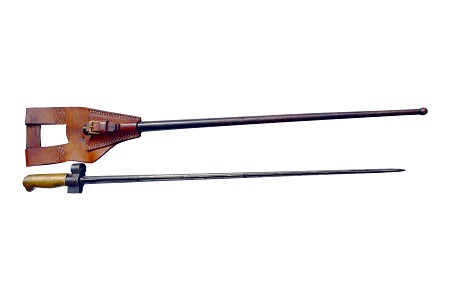The Mousqueton Berthier was the brainchild of one M.Berthier, who was a railway employee in North Africa. He designed the mousqueton for a competition to replace the then-used carbines for the artillery and cavalry troops. The loading system was that of the Austrian Mannlicher (based upon the premise of 'my enemy's enemy is my friend' and as such complying with the French military requisite for patent-free systems). They were officially adopted in 1890 and upgraded in 1892.
In 1914, the Lebel was demonstrated to be obsolete and so the mousquetons were taken and reverse-engineered into full-size rifles, in order to satisfy the need for a more modern firearm, while removing the need for an expensive and time-consuming development process, which in wartime was not practical. Over the course of WW1, both the mousqueton and rifle varieties were increased from 3-round to 5-round magazines. Both versions used the standard 8mm Lebel round.
Due to the relatively late introduction of the MAS36, both types of Berthier were still very much frontline guns in 1939-1940. While the majority of these remained in the original 8mm Lebel round, a quantity were re-chambered to the 7.5mm-round; these were issued to the Maginot fortress crews.


